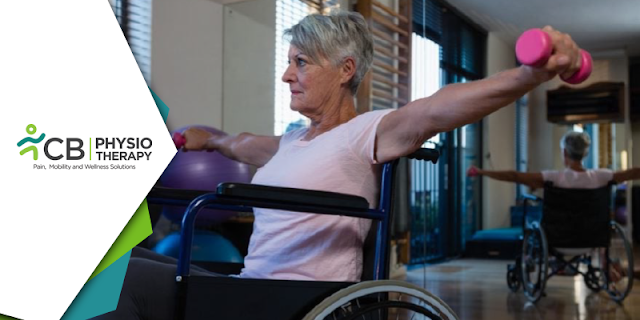Preventing And Healing Common Workout Injuries | How Physiotherapy Can Help?
Working out at the gym is a great way to stay fit and healthy, but it can also come with the risk of injury. Common gym and workout injuries can range from minor to severe, and they can occur to anyone, from beginners to professional athletes. If you do suffer an injury, physiotherapy can be an effective treatment option to help you recover and return to your regular exercise routine. In this blog, we will discuss the common gym and workout injuries, their causes, and how to prevent them, to stay safe and get the most out of your workout routine. When it comes to working out at the gym or engaging in any form of physical activity, injuries are a common occurrence. Some of the most common gym and workout injuries include strains, sprains, tendinitis, bursitis, rotator cuff injuries, herniated discs, and shin splints. However, with proper prevention and treatment, these injuries can be avoided and treated effectively.
Strains and Sprains
Strains and sprains are among the most common gym and workout injuries. A strain is an injury to a muscle or tendon, while a sprain is an injury to a ligament. These injuries can happen when you overstretch or tear the tissue due to improper form, or overdoing an exercise. Symptoms of strains and sprains include pain, swelling, and difficulty moving the affected area.
Tendinitis
Tendinitis is an inflammation of a tendon, which is a fibrous tissue that connects muscle to bone. This injury can occur when you overuse or overload a tendon, causing it to become inflamed and painful. Tendinitis is common in areas such as the shoulder, elbow, wrist, knee, and ankle.
Bursitis
Bursitis is an inflammation of a bursa, which is a small fluid-filled sac that cushions and protects the joints. This injury can occur when a bursa becomes irritated or inflamed due to repetitive motions, overuse, or trauma. Bursitis is common in areas such as the shoulder, elbow, hip, and knee.
Rotator Cuff Injuries
The rotator cuff is a group of muscles and tendons that attach the shoulder blade to the upper arm bone. Rotator cuff injuries can occur when these muscles and tendons become strained or torn, causing pain, weakness, and difficulty moving the shoulder. This injury can occur due to repetitive overhead motions, or trauma.
Herniated Disc
A herniated disc occurs when the soft, jelly-like material inside a spinal disc leaks out, pressing on nearby nerves and causing pain, numbness, and weakness. This injury can occur due to lifting heavy weights, or trauma.
Shin Splints
Shin splints are a common injury that can occur when the muscles and tendons in the shin become inflamed causing injury.
Prevention:
Preventing gym and workout injuries begins with proper warm-up and stretching exercises. It is important to stretch each muscle group thoroughly to increase blood flow and reduce the risk of injury. Additionally, using proper form and technique when lifting weights or performing any exercise is crucial to avoid strain and injury. Gradually increasing the intensity and duration of your workouts is also important to avoid overuse injuries. Wearing appropriate workout gear, such as supportive shoes and clothing, can also help prevent injuries.
Physiotherapy Treatments:
It is important to seek your physiotherapist’s help if you suspect an injury or experience pain while working out. A physiotherapist can assess your injury and recommend the best treatment options to help you recover and return to your regular exercise routine.
Some common Physiotherapy treatments include:
- Electrical modalities: Electrical modalities like TENS, ultrasound therapy, shockwave therapy, laser therapy, etc can help reduce pain and inflammation of the affected area.
- Cold and heat therapy: Cold and heat therapy can help reduce pain and swelling by alternating between cold and warm compresses.
- Taping and bracing: Taping and bracing can help support and stabilize the affected area, reducing the risk of further injury.
- Massage therapy: Massage therapy can help alleviate pain and stiffness by improving blood flow and circulation to the affected area.
- Range of motion exercises: Range of motion exercises can help increase flexibility and mobility in the affected area, allowing you to regain normal function.
- Strengthening exercises: Strengthening exercises can help rebuild strength and endurance in the affected muscles and joints, allowing you to resume your regular exercise routine.
- Education and advice: Physiotherapists can provide education and advice on proper form and technique, injury prevention, and how to safely return to your regular exercise routine.
Gym and workout injuries are common, but they can be prevented with proper warm-up, stretching, form, and technique. If an injury does occur, seeking the help of a physiotherapist can be beneficial. Remember to listen to your body, stay hydrated, and maintain a healthy diet to reduce the risk of injury and keep your body strong and healthy.






